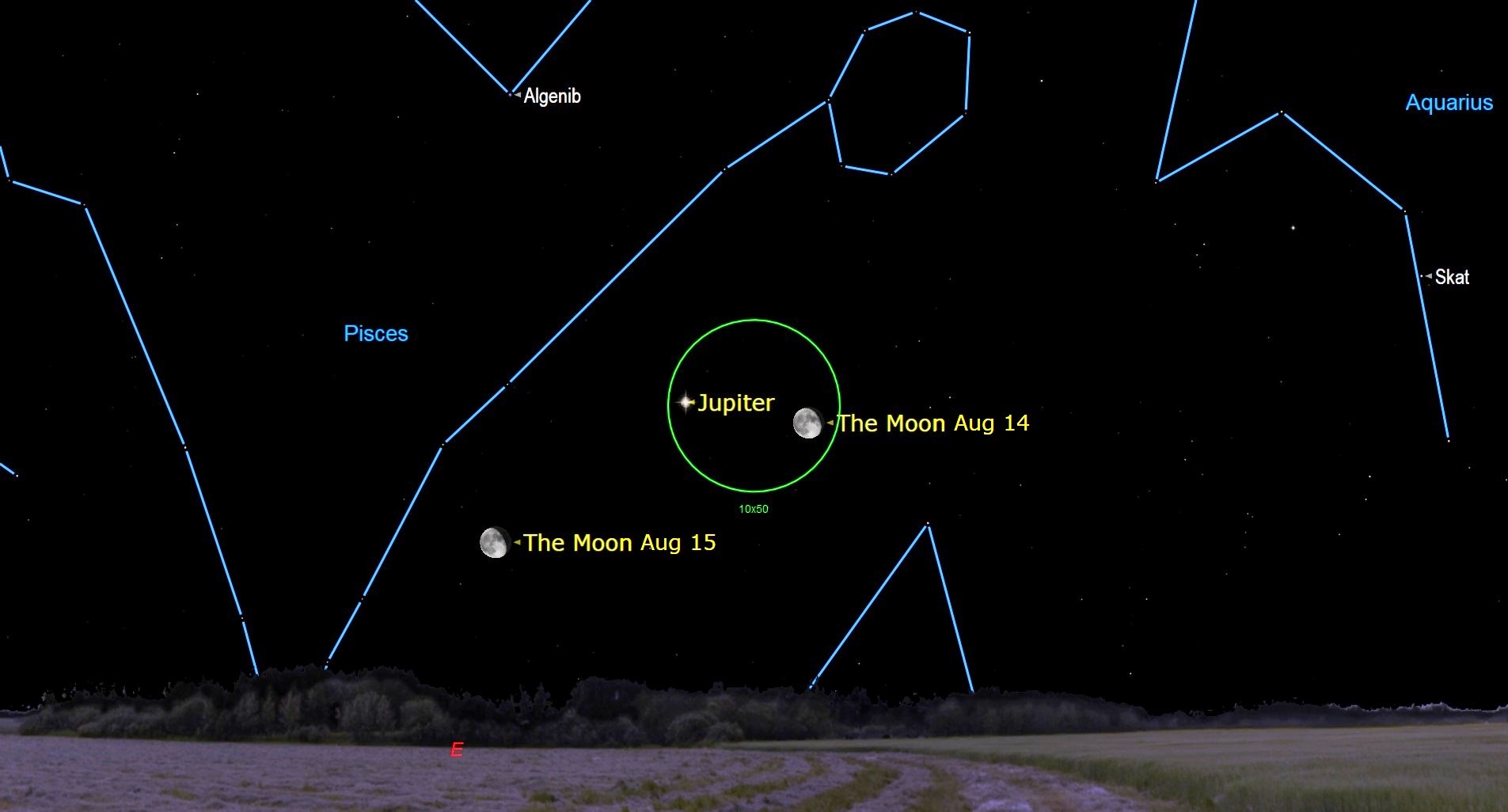Saturn is at opposition. See it shine at its best for 2022 in a free webcast tonight.
Weather permitting, the Saturn webcast will begin at 6:30 p.m. EDT (2230 GMT) via the Virtual Telescope Project.
Editor's note: Update for Aug. 16: Due to bad weather, the Saturn opposition webcast from The Virtual Telescope Project has been rescheduled for Tuesday (Aug. 16) at 6:30 p.m. EDT (2230 GMT).
The ringed planet Saturn is often hailed as the jewel of the solar system and you have a chance to see why in a free webcast tonight.
Saturn, which has the most dazzling rings of all the planets in the solar system, reaches a point in its orbit called opposition tonight (Aug. 16) that marks its closest and brightest appearance in the night sky this year. To celebrate, the online Virtual Telescope Project will broadcast live views of Saturn from a telescope in Ceccano, Italy. Weather permitting, the webcast will begin at 6:30 p.m. EDT (2230 GMT). It will appear on this page at start time, but you can also watch directly on the Virtual Telescope Project website, too.
"As the lunar cycle progresses, Saturn and the background of stars will appear to shift westward each evening as Earth moves around the sun," NASA wrote in an August skywatching guide. "Saturn will be at its closest and brightest for the year on Aug. 14, rising around sunset and setting around sunrise."
Related: The brightest planets of the August 2022 night sky

Looking for a telescope to see Saturn? We recommend the Celestron Astro Fi 102 as the top pick in our best beginner's telescope guide.
When Saturn is at opposition, it is in a point in its orbit that is on the opposite side of the Earth from the sun. It's also at its closest point for the year, which in 2022 is about 823 million miles (1.32 billion kilometers).
According to Space.com's skywatching columnist Joe Rao, Saturn is currently shining at a magnitude of +0.3, which is a bit brighter than Procyon, the eighth brightest star in the night sky. The planet is visible in the southeastern sky.
Breaking space news, the latest updates on rocket launches, skywatching events and more!
Saturn isn't the only planet you can see in tonight's sky. Jupiter and the moon will also put on a show, NASA has said.
"On Sunday night into Monday morning, Aug. 14 to 15, 2022, Jupiter will appear to the left of the waning gibbous moon. The pair will rise above the eastern horizon at 9:58 p.m. EDT with Jupiter about 6 degrees to the left of the moon," NASA wrote in its guide. (Your closed fist held out at arm's length covers about 10 degrees of the sky.)
"The moon will reach its highest in the sky for the night Monday morning at 4:02 a.m. with Jupiter about 4 degrees above the moon, and morning twilight will begin a little more than an hour later at 5:19 a.m." NASA added.
Are you looking for a telescope or binoculars to observe Saturn, Jupiter or the moon? Our guides for the best binoculars deals and the best telescope deals now are a great place to start. Our best cameras for astrophotography and best lenses for astrophotography can also help you find equipment to capture the next skywatching sight like a pro.
Editor's note: If you snap an amazing photo of Saturn or any other night-sky sight and you'd like to share it with Space.com for a story or image gallery, send images, comments and location information to spacephotos@space.com.
Email Tariq Malik at tmalik@space.com or follow him @tariqjmalik(opens in new tab). Follow us @Spacedotcom, Facebook and Instagram.

Tariq is the award-winning Editor-in-Chief of Space.com and joined the team in 2001. He covers human spaceflight, as well as skywatching and entertainment. He became Space.com's Editor-in-Chief in 2019. Before joining Space.com, Tariq was a staff reporter for The Los Angeles Times covering education and city beats in La Habra, Fullerton and Huntington Beach. He's a recipient of the 2022 Harry Kolcum Award for excellence in space reporting and the 2025 Space Pioneer Award from the National Space Society. He is an Eagle Scout and Space Camp alum with journalism degrees from the USC and NYU. You can find Tariq at Space.com and as the co-host to the This Week In Space podcast on the TWiT network. To see his latest project, you can follow Tariq on Twitter @tariqjmalik.




